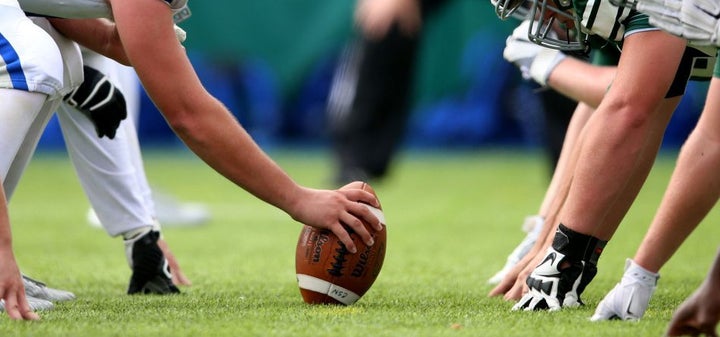
Louise Stanger is a speaker, educator, licensed clinician, social worker, certified daring way facilitator and interventionist who uses an invitational intervention approach to work with complicated mental health, substance abuse, chronic pain and process addiction clients.
I was never inclined to play sports. It wasn’t until I met my husband - a former collegiate athletic director - who taught me how the game of football is played. However, it wasn’t knowing where the red zone is, calling the 25 second rule or how many quarters are played in college basketball that grabbed me about sports.
Instead, it was the nature of athletes---individuals gifted with peak physical performance, bodies under incessant pressure to go faster and harder. And in today’s media-driven world, professional athletes can rise to global dominance, amassing untold wealth and fame, power and influence. Even at the top, I’ve seen how these unique pressures can take a toll on a pro athlete and turn into a substance abuse or mental health disorder.
Some of the most famous sports players have battled addiction. At the height of his sports fame, Dennis Rodman was in and out of rehab for alcoholism. Michael Phelps, the most decorated Olympic swimmer of all time, has two DUI’s and was photographed smoking marijuana, which lost him his sponsorship with Kellogg, the New York Times reported. And eight-time grand slam champion Andre Agassi admitted in his autobiography to having a meth addiction throughout his storied tennis career.
Among dozens of famous football and basketball players, Olympians and triathletes who’ve experienced substance abuse, process and mental health disorders, my research found a common theme: success promises a lifestyle of riches and fame. The flip side of that token is enormous pressure to stay at the top, and when it’s threatened, often times drugs, sex and gambling are the ways athletes cope.
To better understand the relationship between athletes and addiction, I spoke to John Wadas CFRE, a former collegiate athletic director for San Diego State, South Florida and Arizona State, and Mike Ladge, Executive Director and Financial Advisor at Morgan Stanley. Mr. Wadas explained to me how he worked with collegiate athletes, on their way to the big leagues, who felt the lure of fame and success, but faced with the crippling pressure that if they didn’t make the jump, they couldn’t support their families.
For professional athletes, in the high stakes game of multi-million-dollar brand endorsements and sponsorships, Mr. Ladge manages the wealth of some of the biggest athletes and entertainers in the world. And it’s no small feat when addiction finds its way to a top client, inadvertently becoming a problem that lands on Mike’s desk. “The numbers never lie,” Mike explains when he first suspects a client may be in trouble. “When one of my guys withdraws 10K from an ATM, I know something is up.”
Spending huge sums of money -- “I had a client who was writing checks and the next day couldn’t remember who he wrote them to,” Mike shares about how bad it can get -- is just the start of a larger problem. Collegiate and professional athletes experience a unique set of circumstances that may cause an addiction most commonly to painkillers, alcohol and other narcotics.
The story most commonly begins with injury. Athletes are prone to injury - torn muscle, ligament or tendon, concussion, fractured and broken bones, etc. - due to the high physical demands of their sport. In a study of NCAA Division I athletes, 70% of the athletes surveyed reported having one or more injuries. These injuries can cause physical ailments, even chronic pain, that may lead to opioid addiction to manage the pain. Since injuries are so common, prescriptions are easy to come by.
A 2014 study in the Journal of Adolescent Health found that male athletes have greater access and are more likely to abuse prescription pain meds than their counterparts outside of sports. And collegiate athletes who advance to the professional level find it even easier to obtain painkillers and other narcotics. In a study of retired NFL players, 52% said they used prescription pain medication during their playing days, 71% of which said they misused the drugs, and 63% said they obtained the medications from outside medical channels such as a coach, teammate, or trainer.
With such access and availability, it’s easy to get hooked quickly because painkillers are so addictive. In a new study released in March, the Center for Disease Control and Prevention published in its Morbidity and Mortality Weekly Report that with a 10 day supply of opioid painkillers, 1 out of 5 will become long-term users. This new study buffers the retired NFL player findings -- 15% of the 644 former NFL athletes interviewed said they had misused prescription pain pills in the last 30 days.
In most cases, injured athletes feel immense pressure from coaches, the team, family and friends, and the highly competitive nature of the sport to rush the healing period, or even play through the pain, to get back into the game. In fact, over one-half of the NCAA Division I athletes surveyed reported feeling pressure to play their sport while injured. The pressure to play through the injury is even greater at the professional level. For some sports stars, the fear of losing that multi-million-dollar deal with Gatorade or the fading cheers of 100 million Americans on Superbowl Sunday is enough to shrug off an injury.
Per the National Information Center for Pain Medication Addiction, the irony is that this way of treating professional athlete injuries - playing with an injury or cutting down recovery time - shortens their careers due to the long-term damage it may cause to the body. And the worst thing may be for a professional athlete to walk away from their career with an addiction to pain pills.
Athletes’ experiences with addiction notably go beyond the physical. “There’s no bigger high than to step into a stadium and be cheered on by thousands of screaming fans,” Mike explains to me. “Or so I’m told,” he qualifies. That feeling - or lack thereof when injury or retirement comes - creates a psychological vacuum in athletes which can build pressure and lead to erratic behavior.
As such, research published in Current Psychiatry’s article about the psychology of athletes and injury shows that athletes who experience an injury are at risk for a depressive, post-traumatic stress, or adjustment disorder. Moreover, athletes often use their sport to release emotion, so when an injury removes that outlet, anxiety and disappointment may build and feed a mental health disorder.
Though physical and psychological elements paint a vivid portrait of an athlete’s reasons for abusing drugs, there’s a final piece that completes the picture: identity. My interview with Mike brought an insider perspective to this surprising aspect of a professional athlete. “When they’re in peak performance, they’re tuned in. When they’re slumping, injured or benched, people are no longer answering their phone calls.“
It’s not unlike the aging movie star, eclipsed by the young ingenue, who dreams of returning to the spotlight. Andre Agassi, world famous tennis champion, captures it in his autobiography: “My name, my career, everything is now on the line. Whatever I’ve achieved, whatever I’ve worked for, might soon mean nothing.”
An athlete’s identity, even self esteem, is defined by the culture of sports. For many athletes, training and traveling, maintaining strict diets, forming deep bonds with teammates and coaches, competing and then off-season fill their schedules and shape their being. Even athletes’ support systems are forged in the light of sports culture. In fact, athletes who find their family in sports - teammates, coaches, staff - may turn to alcohol or drugs when sport is no longer their central outlet. Athletes are unlikely to have “back up” outlets for help and support because individuals who find their identity in sports are less likely to explore alternative career, educational, and lifestyle options, according to an article in Current Psychiatry.
One way forward is to educate and promote alternative forms of pain management for athletes. Joanna Zeiger, a professional triathlete who sustained an injury that required six surgeries over the course of seven years, recently gave an interview to Outside Magazine about giving up drugs to deal with her pain. “My reluctance stemmed from knowing too many people who became addicted and reading stories about professional athletes who needed rehab for an addiction that began with an injury.”
She’s not alone. Former NFL player for the Tampa Bay Buccaneers, Randy Grimes, uses his sports fame to bring the issue out into the open. After sustaining many injuries over the course of his professional football career, Grimes got hooked on painkillers to manage his chronic pain. He completed pain medication addiction treatment in Palm Beach, Florida, and now encourages other professional athletes to follow his example.
Beyond bringing the issue to light, an alternative pain management solution that is gaining traction is meditation. Scott Weiss, clinical director at Bodhizone Physical Therapy and Wellness in New York City, who works with professional athletes, regularly prescribes meditation. “People often find meditation hard to swallow,” Weiss tells Outside Magazine, “but with the right instructor, they can start finding relief in just one session.” In fact, Weiss claims he’s employed meditation on half of the injured athletes he treats, and 80% of those report reduced pain.
In addition to alternative forms of pain management, clinicians must begin with recognizing the unique needs of an injured athlete, taking into account the culture of sports. As such, Samantha O’Connell, a clinical psychologist and Performance Enhancement Consultant in Boston, MA, writes in an article that successful diagnosis and treatment starts with understanding the meaning of sports culture in the patient’s life and evaluating the “back up” ways they cope and find support. In sum, it is important to help the recovering athlete find another outlet to replace athletics.
Regardless of how athletes encounter addiction, they can benefit from someone who understands the issues they face. “My conversations are more than stocks and bonds and investment advice,” Mike says. “The pressure of living a spotlight lifestyle takes its toll mentally, physically and financially,” he tells me as we finish up the interview on a Friday afternoon. “First they have to come clean; that’s when I can try to help them.”
To learn more about Louise Stanger and her interventions and other resources, visit her website.
Resources
For more information about the psychology of athletes and addiction, visit Current Psychiatry’s article on the topic here.
For a look at alternative forms of pain management for athletes who sustain injury, visit Outlook Magazine’s article here.
For more information about professional athlete painkiller addiction and a video on Randy Grimes’ struggle with addiction, visit the National Information Center for Pain Medication Addiction here.
For more information about treatment for addiction to pain medicine, visit the Athletes Recovery page here.
For an academic paper on drug abuse in athletes, visit the US National Library of Medicine here.
To see a list of 30 famous athletes who have battled drug addiction and alcoholism, visit DrugAbuse.com here.
For a study of retired NFL players and pain pill addiction, visit the ESPN page here.
For a look at Andre Agassi admitting to using crystal meth in his autobiography, visit the ESPN story here.
